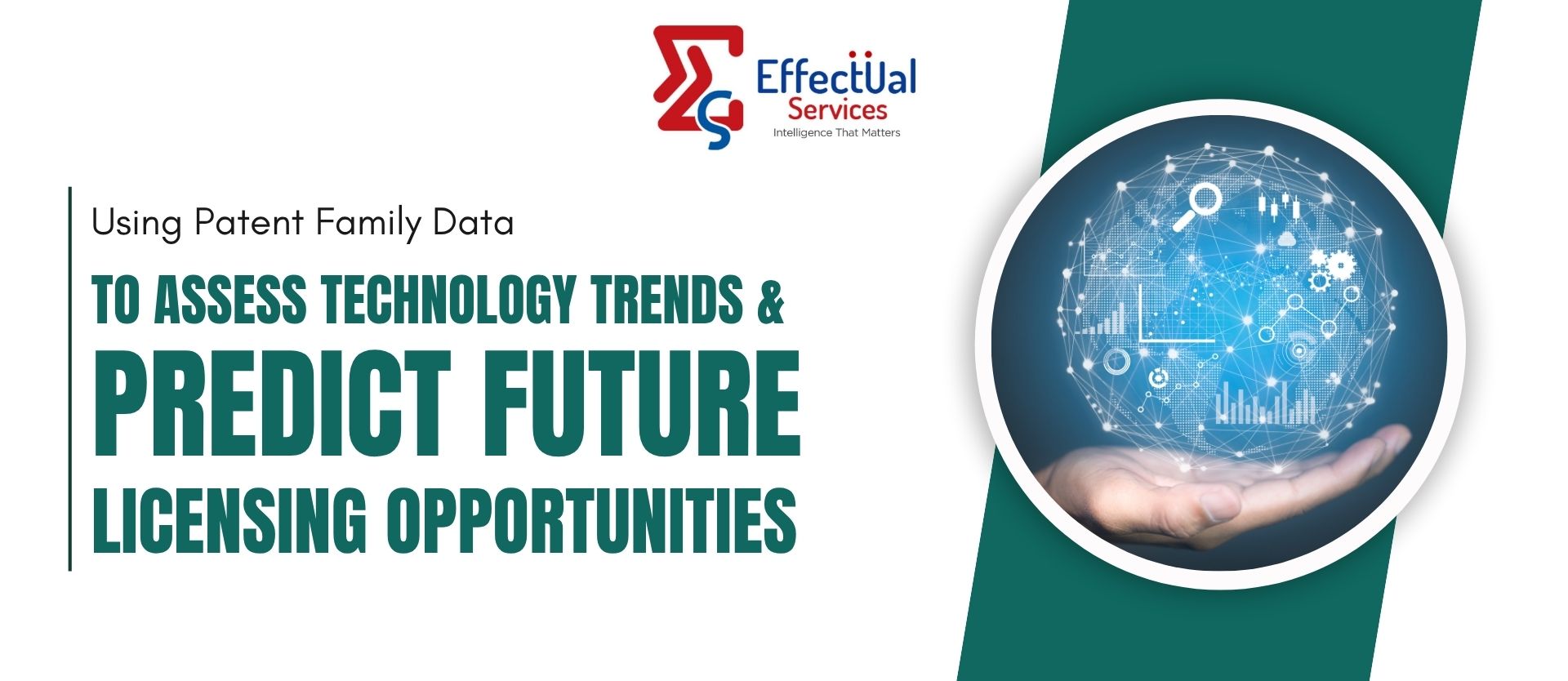Using Patent Family Data to Assess Technology Trends and Predict Future Licensing Opportunities

Patent family data is a powerful tool for understanding the innovation landscape and identifying strategic business opportunities. A patent family refers to a collection of patents filed in multiple jurisdictions for the same invention. By analyzing this data, businesses and researchers can uncover trends in technology development, assess competitive landscapes, and predict potential licensing opportunities.
Key components of patent family data
- Priority Date: The filing date of the first patent application for the invention, indicating when the innovation was conceived.
- Jurisdictional Coverage: The countries or regions where patents are filed, revealing the target markets or strategic importance of the invention.
- Legal Status: Whether the patents in the family are active, expired, or abandoned, offering insight into the lifecycle of the technology.
Assessing Technology Trends
By examining patent family data, organizations can gain valuable insights into technology trends:
- Emerging Technologies: Monitoring an increase in patent families in a specific field can indicate the emergence of a new technology. For instance, the rise in patent filings for artificial intelligence (AI) and renewable energy technologies highlights growing innovation in these areas.
- Geographic Focus: Understanding the geographic spread of patent filings helps identify innovation hubs. For example, if a technology shows high filing activity in the US, China, and Europe, it signals significant interest and market potential in those regions.
- R&D Prioritization: The breadth and depth of a patent family can reflect an organization's investment in R&D. A larger family with patents filed in multiple countries often indicates a high-value invention with global appeal.
Predicting Licensing Opportunities
Patent family data is instrumental in identifying potential licensing opportunities by:
- Detecting High-Value Technologies: Organizations that file patents broadly across jurisdictions view their technology as commercially valuable. These technologies are prime candidates for licensing agreements.
- Identifying Gaps in Market Coverage: If a patent family does not cover certain jurisdictions, it may indicate a lack of market presence or strategic interest in those regions. Businesses can seize this opportunity to license or acquire rights to these patents for untapped markets.
- Analyzing Competitor Portfolios: Evaluating competitors' patent families provides insights into their innovation strategies. For instance, if a competitor focuses on filing patents in a specific technology domain, licensing opportunities may arise in complementary areas.
- Spotting Expiring Patents: Analyzing the legal status of patent families helps identify soon-to-expire patents that can be utilized without licensing or acquired at a lower cost.
Tools and Techniques for Analysis
Advanced tools and databases are essential for analyzing patent family data effectively. These include:
- Patent Databases: Tools like Espacenet, Derwent Innovation, and PatSnap provide detailed patent family information, including filing trends and legal status.
- AI and Data Analytics: Artificial intelligence and machine learning algorithms enable semantic mapping and trend detection within patent data, allowing for deeper insights into technology trajectories.
- Visualization Tools: Graphs and heatmaps help visualize patent filing trends, geographic distribution, and market gaps.
Real-World Applications
- Electric Vehicle (EV) Technology: By analyzing patent families in EV batteries, companies can identify emerging players, critical innovations, and regions with high market activity. Licensing opportunities may arise in countries with lower patent coverage.
- Pharmaceuticals: Patent families for a blockbuster drug often reveal the breadth of its market potential. Identifying jurisdictions with expired patents allows for generic manufacturing and licensing opportunities.
- Blockchain Innovations: Analyzing patent families in blockchain technology helps determining industries adopting the technology and regions with growing interest. Companies can explore licensing blockchain solutions for financial, supply chain, or healthcare applications.
Conclusion
Patent family data serves as a strategic asset for organizations aiming to stay ahead in competitive markets. By leveraging this data, businesses can:
- Uncover emerging technology trends.
- Assess R&D priorities and innovation hubs.
- Predict and capitalize on licensing opportunities.
With the right tools and analytical frameworks, patent family analysis becomes a gateway to innovation-driven growth and market leadership.
Solutions Driving Innovation & Intelligence
Enabling Fortune 500's, R&D Giants, Law firms, Universities, Research institutes & SME's Around The Globe Gather Intelligence That
Protects and Nurtures Innovation Through a Team of 250+ Techno Legal Professionals.

